The Grith Energy SWOT
Developing an energy SWOT
The GRITH project believes in a user-based approach. In order to help industrial sites – both in their energy transition and economic development - we need to understand their perspective, empathize and encourage a clearer understanding of their own situation. Supporting their own understanding is especially important.
The GRITH Energy SWOT is a co-created pool of knowledge about the Energy Strengths, Weaknesses, Opportunities and Threats of industrial sites, their businesses, their organisation, (public) support and their individual and local/regional economic, environmental and social impact .
Shared analysis
Taking inventory and analyzing these aspects is the first step towards a better understanding, both by us as supporting organizations and by the stakeholders themselves. Therefore, the GRITH consortium’s work with industrial sites starts with an Energy SWOT, conducted together with the industrial sites. Shared analysis is the start of working together on the site’s next steps towards renewable energy and increased energy efficiency.
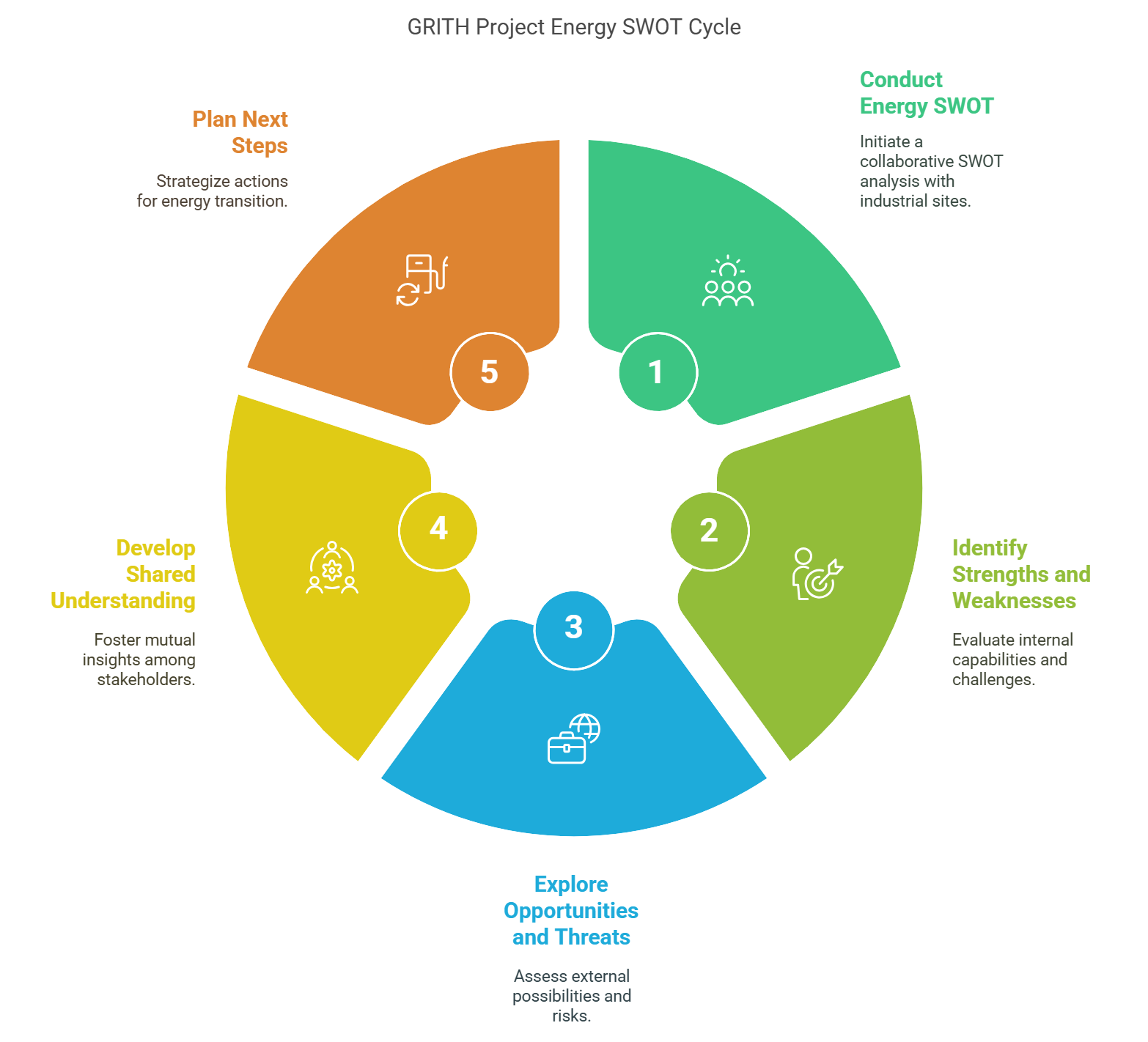
GRITH Energy SWOT
Data collection for sites
The data on energy consumption needs to be shared by the sites and businesses based there. Some of this data is already collected by relevant authorities. If not obliged by law, some businesses and sites may be hesitant to share data that could be confidential. For each situation, GRITH partners investigate with these sites how to take these concerns into account.
Start with diagnosis: collect data on 3 levels:
- Primary energy and MWh: MWh of fuel, coal, wind, nuclear, natural gas
- Transformation(s) of the energy and MWh: for example MWh solar to MWh of electricity
- Usage of MWh: building, utilities, processes, transport, losses.
Present the data in a Sankey Diagram: a flow diagram that emphasizes flow/movement/change from one state to another, in this case from one type of energy to another. The main focus of the Sankey Diagram is firstly on the total energy consumption. A carbon diagram would require a translation. GRITH partner Pôlénergie has also made this carbon Sankey diagram, highlighting that natural gas and coal are the two main sources that need to be ‘tackled’. GRITH partner Emmen has developed a Sankey diagram for the whole municipality.
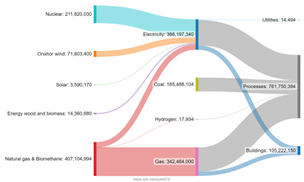
Polenergy Sankey Diagram for Isbergues Industrial Site.
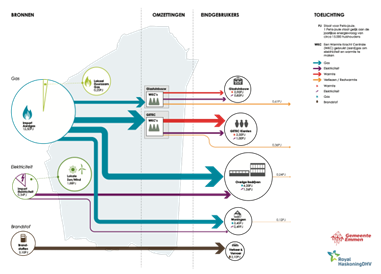
Emmen Sankey Diagram for the whole municipality
Based on the Sankey Diagram, the energy flows can be translated to CO2 emissions. This insight in the carbon footprint helps to identify where and which measure will lead to the largest effect in reducing this carbon footprint. For industrial processes, heat is often responsible for the highest emission. In these cases, process heat should be the priority for an action plan.
Shared Lobbying as method for coalition building and shared SWOT analysis
GRITH partner Wesermarsch started their efforts in the energy transition of industrial companies – in reaction to a call of these companies – by helping them organize, coordinate and connect their activities in energy transition. Wesermarsch used a more bottom-up approach.
There were a few first-enablers who felt a certain pressure to act because of external effects – the EU Green Deal, the war in Ukraine and the resulting impacts on energy supply and prices.
Some industrial companies had already started several internal projects to reduce energy costs or manage energy consumption in a more sustainable way. However, they soon realized that demands exceeded their individual capacities, including –the energy infrastructure of their sites.
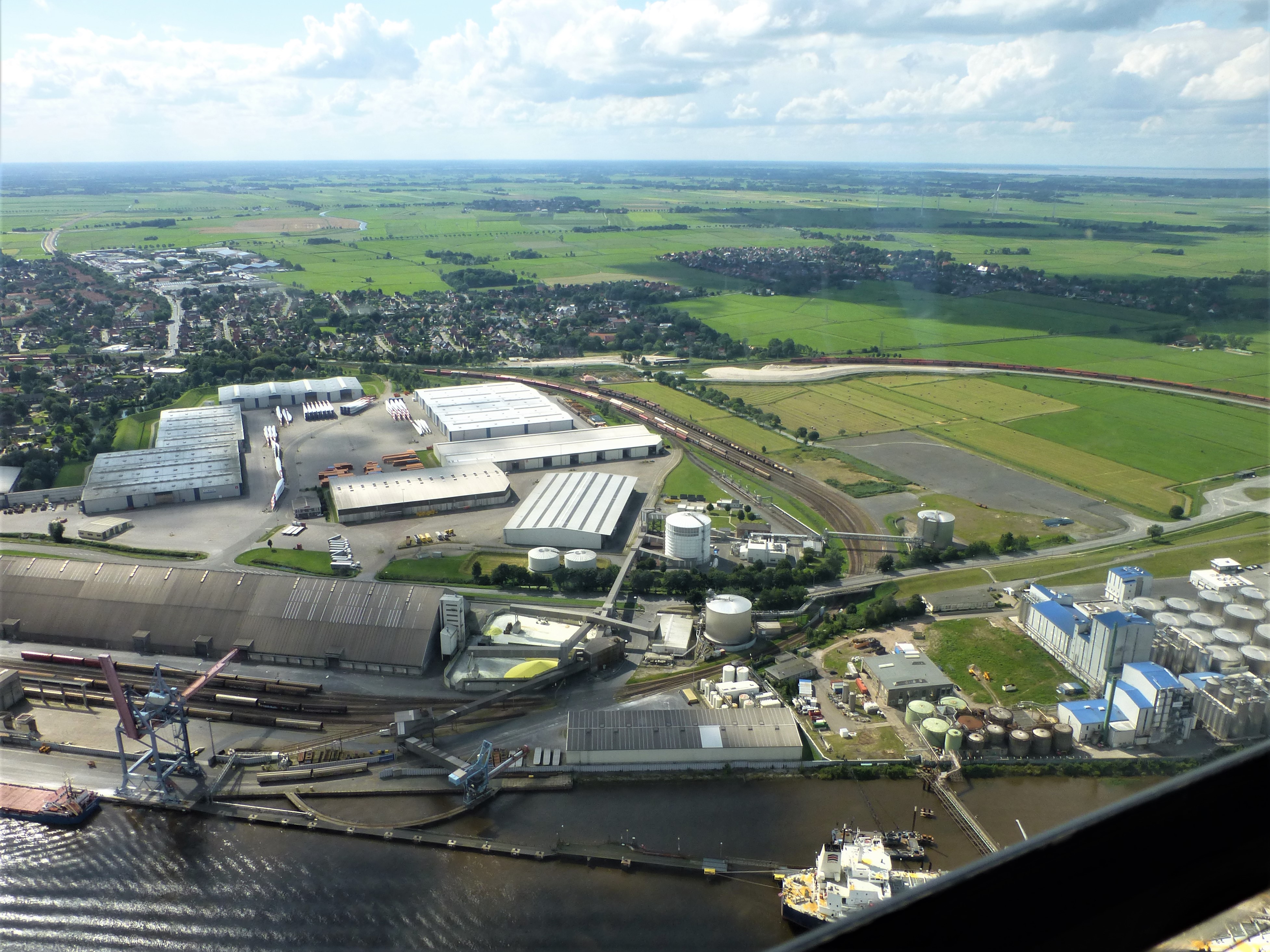
Photo: Eckhard Berger
As a result, a couple of first-movers reached out to Wirtschaftsförderung to help get connected with other companies and energy providers, and/or get connected with local communities. Through the efforts of Wirtschaftsförderung, a cluster was formed with different stakeholders in the local energy transition consisting of partners from administration, economy and infrastructure providers.
The Wirtschaftsförderung supplies a platform for several stakeholders in the energy transition by organizing meetings, inviting new partners, keeping in touch with local municipalities and functioning as a contact point for questions and project ideas. By spreading the message and scaling up communication efforts, the partner aims to surpass the local limits.
Best Practice from Drenthe: IBDO Business Advisors drive energy transition
In Drenthe as in other regions, one of the weaknesses identified is the lack of trust between enterprises and authorities. This affects the energy transition. To overcome this challenge, Drenthe together with its municipalities developed the support program and expert pool IBDO: Ik Ben Drents Ondernemer – I’m an entrepreneur from Drenthe.
The experts from IBDO are often entrepreneurs themselves and thus ideally based to build a relationship with the enterprises they advise, based on a common understanding. The IBDO advisor with the highest conversion rate is also the owner a recreation park. Speaking the same language helps the IBDO advisors to support the large group of small and medium sized enterprises from Drenthe on topics such as innovation, digitalization and energy transition. A practical tip from the business advisors is never to leave a conversion without a next appointment, to follow up on the advice given, on the trusted relationship in the making.
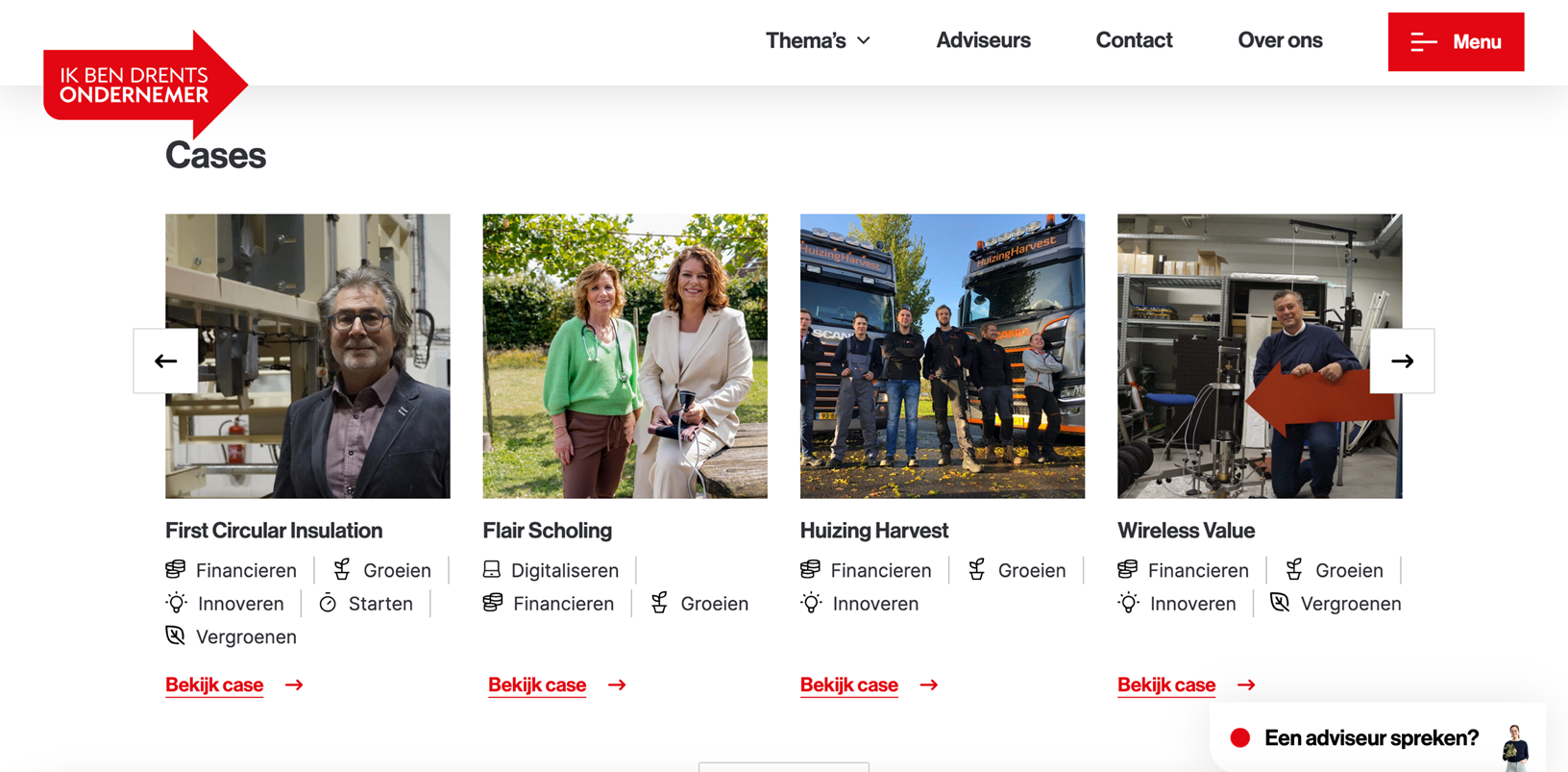
IBDO - Buisness Advisors in Drenthe drive the enrgy transition
Key element in the energy advice by the IBDO business advisors is the approach of collective demand: organizing shared demand for renewable energy, energy efficiency technology and investments. Here industrial sites are the logical starting point. However, there is also much interest in sector-organization, bundling enterprises throughout the province active int he same sector and facing the same challenges.
In addition to collective, industrial site or sector solutions, IBDO advisors also support enterprises with individual solutions, tailored to the specific needs and potential of businesses. In both cases a positive business case is crucial. Without a positive business case the small and medium sized enterprises reached by IBDO advisors are not likely to follow up and move forward with their energy transition. Interestingly is that although many enterprises expect that their business case would be negative without subsidies, the actual case is positive, with lower energy costs and a sound return on investment.
Guide for Energy Neutral Business Parks
GRITH partner Drenthe developed a guide for energy neutral business parks and industrial sites. The guide is a useful supplement and follow-up to the data collection mentioned previously. The guide also looks at physical characteristics and organizational structure (step 2).
Step 1 Global Exploration | Step 2 Mapping out The starting Situation | Step 3 Identifying Opportunities | Step 4 Implementation plan for projects and collaborations | Step 5 Implementing and safeguarding plans |
Step 2 Mapping out the starting situation Physical characteristics 2.0 Demarcation of the planning area 2.1 Business Park – Industrial Site 2.2 Buildings 2.3 Capacity Social characteristics 2.4 Stakeholders 2.5 Form the organization and types of consultation |
PESTEL: Outside influences & incentives
GRITH partner Vejle works with the PESTEL model to identify outside influences on and incentives for industrial sites. PESTEL is a framework to assess macro environmental aspects of energy consumption: political, environmental, social, technical, economic & legal.
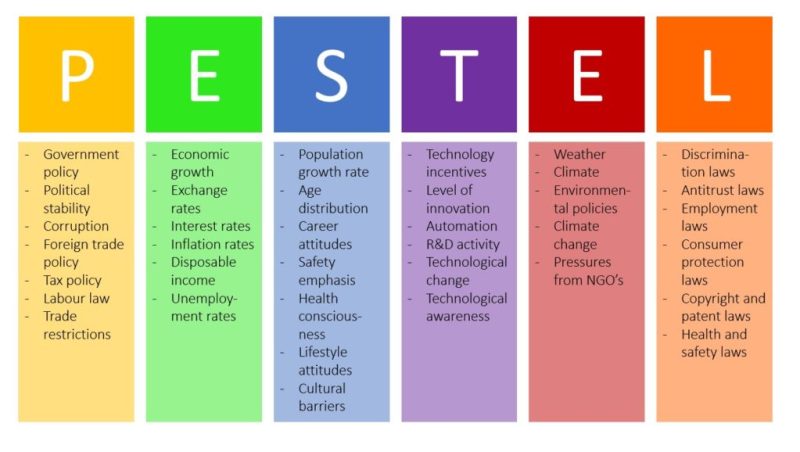
Threats and Opportunities
The GRITH focus is on opportunities related to the threat of high carbon emissions and high (volatile) energy prices. These opportunities to increase energy efficiency and to switch to (renewable) energy sources with lower carbon emissions can be realized through different solutions. Every solution for decarbonization needs to be tailor made.
Guide for Energy Neutral Business Parks
GRITH partner Drenthe developed a guide for energy neutral business parks and industrial sites. The guide is a useful supplement and follow-up to the data collection, characteristics mapped and PESTEL influences identified. Step 3 of the guide identifies opportunities:
Step 1 Global Exploration | Step 2 Mapping out The starting Situation | Step 3 Identifying Opportunities | Step 4 Implementation plan for projects and collaborations | Step 5 Implementing and safeguarding plans |
Step 3 is about establishing cooperation, involving business owners and stakeholders and jointly identifying sustainability opportunities. Here it is important - based on the picture formed of the business park in the first steps - to closely involve individual companies. This can be done by holding discussions, organizing meetings or a round of phone calls. This phase also reveals opportunities for partnerships and any associated risks. In addition, concrete ideas and solutions are identified and, where possible, appointed to project ideas.
Step 3 Identifying Opportunities 3.1 Kick-off meeting 3.2 Individual opportunities and ambitions per business 3.2 .a Discussion round 1: Collecting relevant data 3.2 .b Discussion round 2: Concretize 3.3 Translating opportunities |
Flemish EHUB-BT study
In Mechelen the Energy SWOT was informed by the Flemish EHUB-BT study. In 2021 the Flemish Department of Environment and Spatial Development published an exploratory study on the EHUB-BT concept: Energyhubs on Industrial Sites. Together with the study, the Flemish government developed a work methodology to assess the potential of an industrial park becoming an energy hub, including suggestions on organizational structure. City of Mechelen works with this tool on Mechelen North, provide a translated version of the study and methodology and will disseminate this to the other project partners.
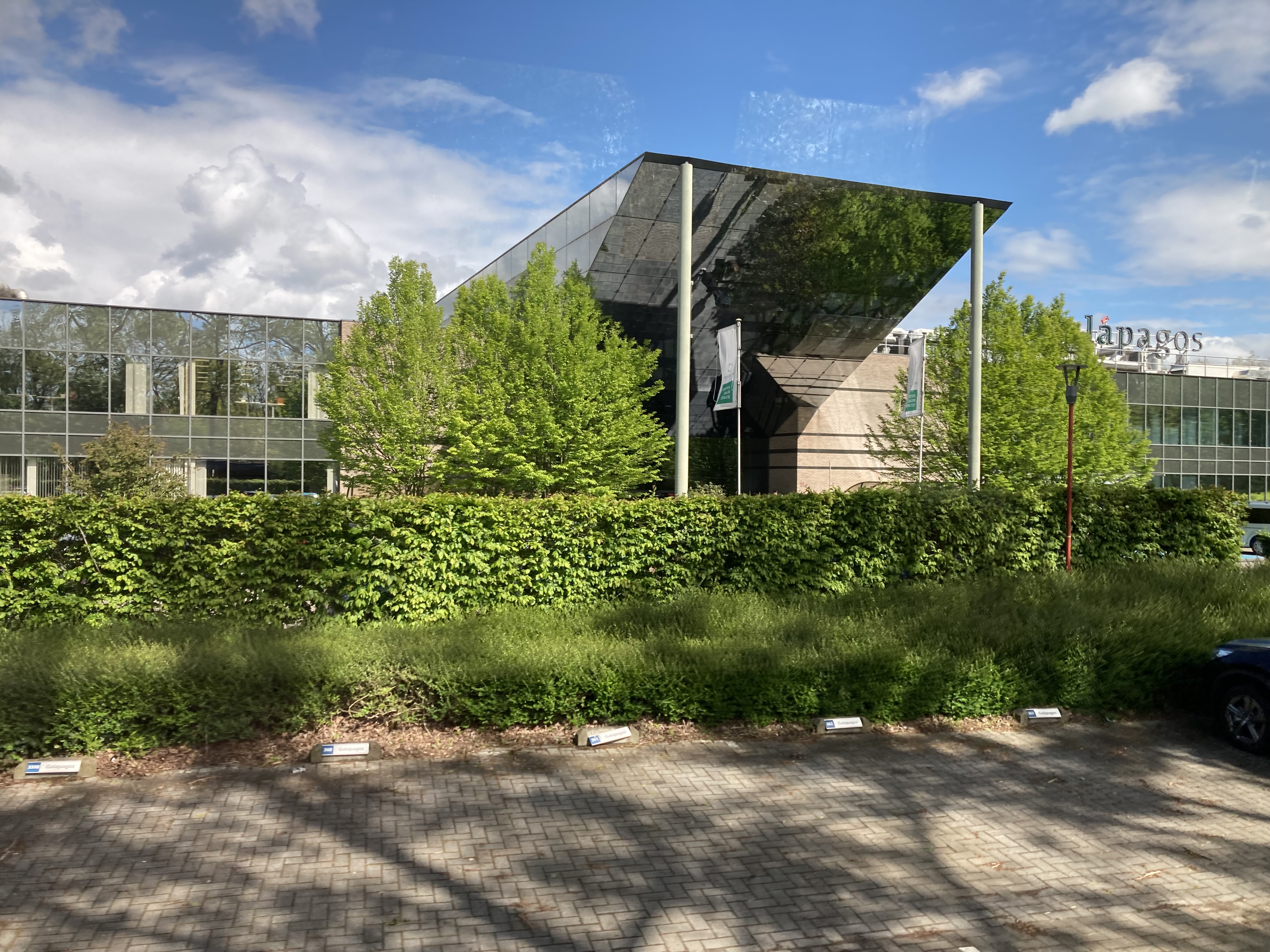
An EHUB-BT is a system consisting of a geographical area in which the energy demand and supply of at least one industrial site and one nearby consumer are matched through multi-carrier energy system (energy conversion, storage and network technologies) with local control, structural collaboration and active support of the energy transition. The EHUB-BT study recognizes three types of hubs:
- Switchhub: the industrial site has a strategic position in the regional energy ecosystem creates a huge potential for large-scale energy sharing, distribution and storage of one or more energy carriers.
- Heathub: the focus is on capture of rest-heat on and around the industrial site
- Energyhub: a large potential for the production of renewable energy including local storage.
Quares, one of the enterprises based on the Mechelen North industrial site, participated in the Flemish EHUB-BT study and is now involved in how the building blocks of the EHUB-BT model can be implemented here: Energy Demand, Energy Supply, Flexibility & Network, Incentive & Collaboration. Mechelen works on developing Mechelen North into a Switchhub.
Flemish EHUB-BT typology
| Building Block | Elements | Heathub | Switchhub | Energyhub |
| Demand | Energy intensive enterprises Regional collective heat consumption Onsite heat consumption | 1 | 1 | 2 |
| Transregional infrastructure | 1 | 1 | 2 | |
Onsite electricity consumption Regional electricity consumption | 1 | 0 | 2 | |
| Development potential | 1 | 1 | 2 | |
| Supply | Waste-heat | 2 | 0 | 1 |
Wind energy Solar energy | 0 | 2 | 1 | |
| Flexibility & Network | Transregional infrastructure Distribution stations | 0 | 2 | 1 |
Underground energy storage Electricity storage through cold stores or V2G | 0 | 1 | 2 | |
| Transregional infrastructure | 0 | 1 | 2 | |
| Incentive & Collaboration | Organizational structures Asset ownership Grounds ownership | 1 | 1 | 1 |
| 0 | Not relevant or below threshold |
| 1 | On threshold |
| 2 | High potential, above threshold |
Local Organizations as (potential) change agents
GRITH partner Borås works closely with the association, ”Viareds Företagsförening, VFF” , that in a voluntary way organises companies / members around topics like safety, roads, parking, public transports, services etc. on the Viared Industrial Site. Based on this experience Borås has identified the following tips:
- If possible, work together with a Company Associations in the area. It makes the work easier in terms of communication, awareness raising and reaching a point of Common Interests among the companies.
- Be generous with information regarding the aim of the project is, what work is needed to proceed and what their participation entails, in order to raise members’ interest and support. The association must understand the advantages - ”what’s in in it for me/for the members” - before they commit to further communication.
- Be well prepared before approaching the Association or companies, respect their time and efforts .This is particularly valid in the Swedish case where such activities are above and beyond the normal work brief.
- Raise interests in steps, keeping future plans in mind. Also be aware that companies all have different starting points when it comes to the challenges and possibilities of an energy transition.
- Connect and team up with different competences to create a broad knowledge input and develop the next steps.
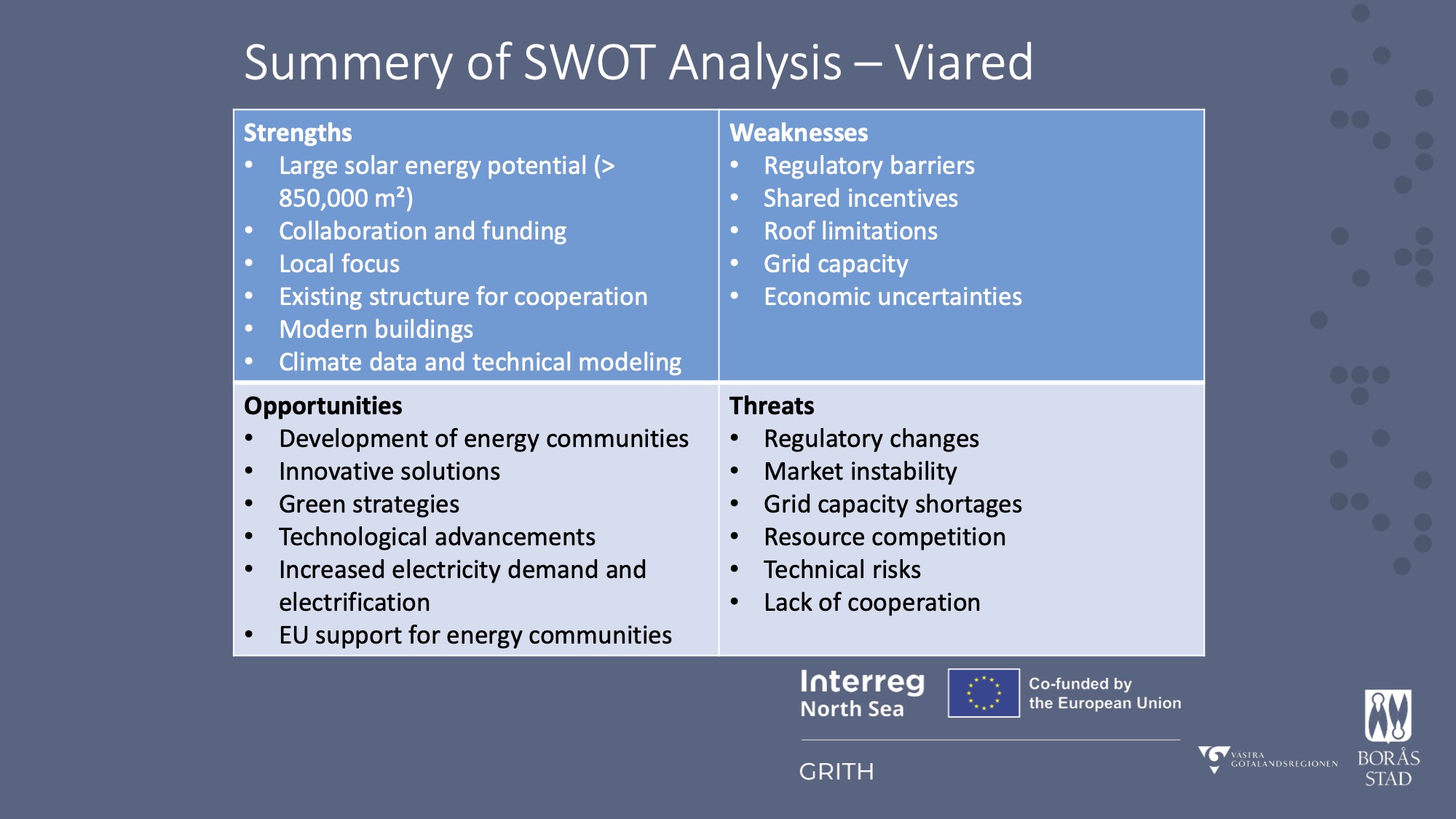
GRITH partner Pôlénergie advises 5 steps:
- Initial situation: create an overview of installations and regular monitoring of consumption.
- Energy sobriety: reduce energy requirements to what’s necessary only.
- Energy efficiency: optimize energy consumption
- Energy mix: change the energy mix to decarbonize the process
- Renewable energy: integrate renewable energy to the energy mix.
It is really important to start with questioning the usage. Oversizing energy installations will lead to overconsumption, wasted energy and higher bills. It is crucial to start with energy efficiency. It’s difficult to prioritize your actions, which is why it’s so important to measure consumption.

74% of the industry’s energy needs are in the form of heat. Heat is the main requirement for the industrial sector. Modify the process (e.g. lower the process heat temperature), optimize the process (e.g. equipment performance), exploit waste heat. Of the 30% of electricity consumed, much is used for electric motors (in the production process): here there’s room for optimizing electricity use.
Energy efficiency
The optimization of energy consumption should focus on reducing energy losses, by increasing the efficiency of processes, improving insulation and re-using waste energy. Here - and when it comes to implementing renewable energy sources on site – vertical integration is an important strategy.
Energy mix:
Electrification: choose the electricity sources with the lowest carbon footprint. Electricity production and consumption might not be balanced. For electrification it is important to know what capacity the national network has to supply the electricity and face peak demand.
Hydrogen: there is a large demand but, as yet, there’s insufficient supply of green hydrogen. Hydrogen is produced through electrolyzes. This process has a relatively low energy efficiency whereby 30% to 45% of electricity is lost. Depending on how hydrogen is used more energy can be lost.
Renewable energy that can be used in industry:
- Solar thermal: simple source, but high capital investment, land use, and low temperature heat. Preheating is very interesting
- Solar photovoltaic. Competitive, but depending on sunshine, variable, large area.
- Biomass: lots of biomass sources (a great deal of competition with other goals and land uses) many uses for biomass. High temperature is possible, potentially continuous, limited resource, significant storage space.
- Geothermal: like a heat pump with a stable external source. Produces heat and cold (big advantage) high performance, high capital-expenditure, a lot of land for geothermal probes, low temperatures.
- Windturbine
- Nuclear: From the French perspective a potential game changer, especially when small modular reactors are available as they have a number of advantages.
- Aqua thermal: heat and cooling from rivers, mentioned by GRITH partner Mechelen and not yet considered In France. Aqua thermal is the same technology as a heat pump but with a different source.
- Carbon Capture: Carbon storage is not the answer to every problem. Carbon reuse is potentially very interesting, but also complex.
Overall, it is good to note that there is not one clear solution. Renewable energies are part of the solution – you cannot rely on a single solution.
An Energy Management System is crucial: businesses and industrial sites need data, both to become more energy efficient and to apply for subsidies.
The GRITH Engagement Strategy
User based approach and understanding
GRITH is based on the insight that effective support of industrial sites and the businesses operating there, demands first and foremost our understanding of their needs, second a good working relationship and finally a smooth journey from awareness to action. GRITH has already described its user-based approach and how it understands the needs, opportunities and threats of industrial sites in the project's Energy SWOT. Next step is to engage. For this, the partners have co-developed a strategy - The GRITH Engagement Strategy.
Industrial Sites and businesses as ‘customers’
It helps to see industrial sites and businesses as GRITH the customers of GRITH - a supporting organization. We want to ‘sell’ the sites and businesses our support and solutions, free of charge. We want to reach as many sites and businesses as possible and we aim for a high conversion rate: as many of our contacts as possible should lead to interest and action by industrial sites and businesses. Therefore, our GRITH engagement and support strategy implements state of the art sales and customer journey methodologies.
The difference between salesmen and people with less experience in sales, is that salesmen make selling a science, by adopting a methodology, such as SCOTSMAN or MEDDPICC. The most important thing to remember is that we need to convince individual people, rather than the businesses or industrial sites. The approach should therefore happen on a personal level, as it is individuals that need to be convinced.
SCOTSMAN Sales methodology
The SCOTSMAN model focuses on the sales process and offers a checklist for the elements of potential sales:
- Solution: the solution should fit the industrial site. The solution may be good in itself, but if it doesn’t fit the industrial site, success is unlikely
- Competition: not as relevant for GRITH
- Originality: the solution needs to be original
- Time: When is the budget available? When will decisions be made? When will the targets be reached? Ask for milestones.
- Scale: in larger companies, there are many people to deal with, who need to agree; smaller companies can be quicker in taking a decision. Additionally small companies can be used as examples to get large companies more eager to get involved
- Money: companies always look for ways to make money. The solution needs to be profitable. It cannot on the long term be based on funds and subsidies. The solution needs to be financially sustainable
- Authority: speak to the right people. Make sure you are talking to the people in charge of making the decisions you need. This can save a lot of time and effort
- Need: Larger companies need to report according to sustainability, CSRD regulations. Smaller companies not so much, however they often supply to larger companies, who will soon start to ask for the smaller companies to comply with rules for sustainability
MEDDPICC Sales methodology
The MEDIC or MEDDPICC model focuses more on the decision makers and their needs, which it does through the following checklist:
- Metrics: the solution should be economically viable
- Economic buyer: you should be talking to the person in charge of this
- Decision criteria
- Decision process
- Paper process: going through paperwork
- Identify pain: try to find problems entrepreneurs may be having that you may relieve with the solution you offer
- Champion: look for a larger entrepreneur as champion to have as example for others
Learning from successes and failures in Drenthe
- Failure: The Business Investment Zone (BIZ) in Peize was an initiative for the companies on the industrial site/business park to invest together to improve the quality of their business park. Initially this was a successful initiative, as companies decided to cooperate. Later, however, the province of Drenthe learned that the initiative had been left without care, and the involved companies had decided to discontinue the idea. The main issue was the lack of follow-up.
- Success: A much more positive experience ended up being the Community of Practice in Drenthe, aimed at creating a shared environment in order to scale up the realization of energy hubs to try and solve congestion problems. This project is currently doing well, with local initiatives participating and driving the Community of Practice.
Lessons:
- Every case is different, with different goals and interests.
- ‘After sales’ is decisive for success, with contact afterwards, through milestones and reporting to make the project durable.
- A good thing to remember is to make the process for the entrepreneurs, meaning that it is not about our interests, but about theirs. Use their language to make them owner of the project.
- Successes not only based on the methodology and not only on instincts. Listen to your gut feeling, but have it confirmed by methodology.
Why a customer journey?
In addition to the sales methodology a customer journey helps us and these sites plus businesses to understand the larger process. The sales methodology helps to engage and convince industrial sites and businesses of individual steps, The customer journey helps to focus on the overall goal. In most cases the on-site energy transition takes many steps. The customer journey model helps to identify touchpoint to reach the customer, analyzes the stumbling blocks in products or service, support marketing efforts and customer engagement.
Again: based on understanding needs and opportunities
Every functioning customer journey should be based on understanding the customers needs, wishes, and opportunities. For this the GRITH Energy SWOT and user-based approach provide essential input. A functioning customer journey, especially when combined with an effective sales approach, will achieve more conversion and generate more return on investment, in our case more return on the European and regional investment in the energy transition of industrial sites.
Building a customer journey
GRITH develops a customer journey in which its Next Generation Business Model and Governance Backbone are key elements. Drenthe’s Guide for Energy Neutral Business Parks is situated at the start of the Customer Journey. Partly inspired by Drenthe’s Guide, Vejle has plotted its actions in a (first phase) customer journey. Mechelen’s single point of contact philosophy, supported by a CRM system helps to guide businesses on their customer journey. The Clean Industrial Deal announced by the European Commission in February 2025 is a welcome policy framework, supporting the GRITH customer journey.
Individual solutions as part of the customer journey
The energy transition journey of industrial sites has many separate challenges. GRITH works on solutions for these challenges, which also support a smoother customer journey. First examples are Wesermarsch’ business model for a next generation industrial site, Emmen’s legal framework for a site based renewable energy system, Mechelen’s energy broker action plan.
Guide for Energy Neutral Business Parks
GRITH-partner Drenthe developed a guide for energy neutral business parks and industrial sites. This was created by the energy department of the province in combination with economy department to pool knowledge. This was combined with local knowledge to connect in an efficient way to the right business parks: parks and companies willing, able and cooperative. In Drenthe, the engagement of business parks follows a five-step plan: explore, map, identify changes, implementation, execution.
The guide is focused on data and situation, it looks at the opportunities and threats, physical characteristics and organizational structure. The guide is less focused on the relationship in how both sites and businesses move forward.
Step 1 Global Exploration | Step 2 Mapping out The starting Situation | Step 3 Identifying Opportunities | Step 4 Implementation plan for projects and collaborations | Step 5 Implementing and safeguarding plans |
Customer Journeys for Industrial Sites in Vejle
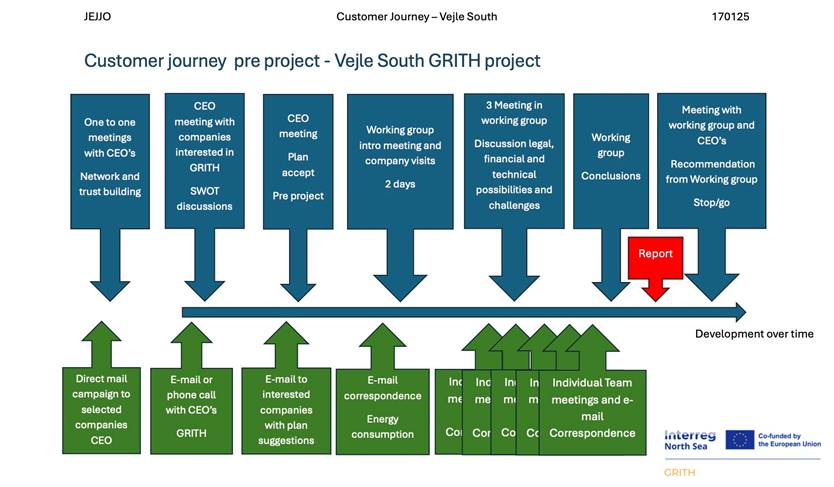
Vejle works with the customer journey for each phase of the energy transition on industrial sites. With industrial site Vejle South, six businesses and 1000 houses the ambition is to transition to renewable energy through solar panels,
battery storage, district heating, and 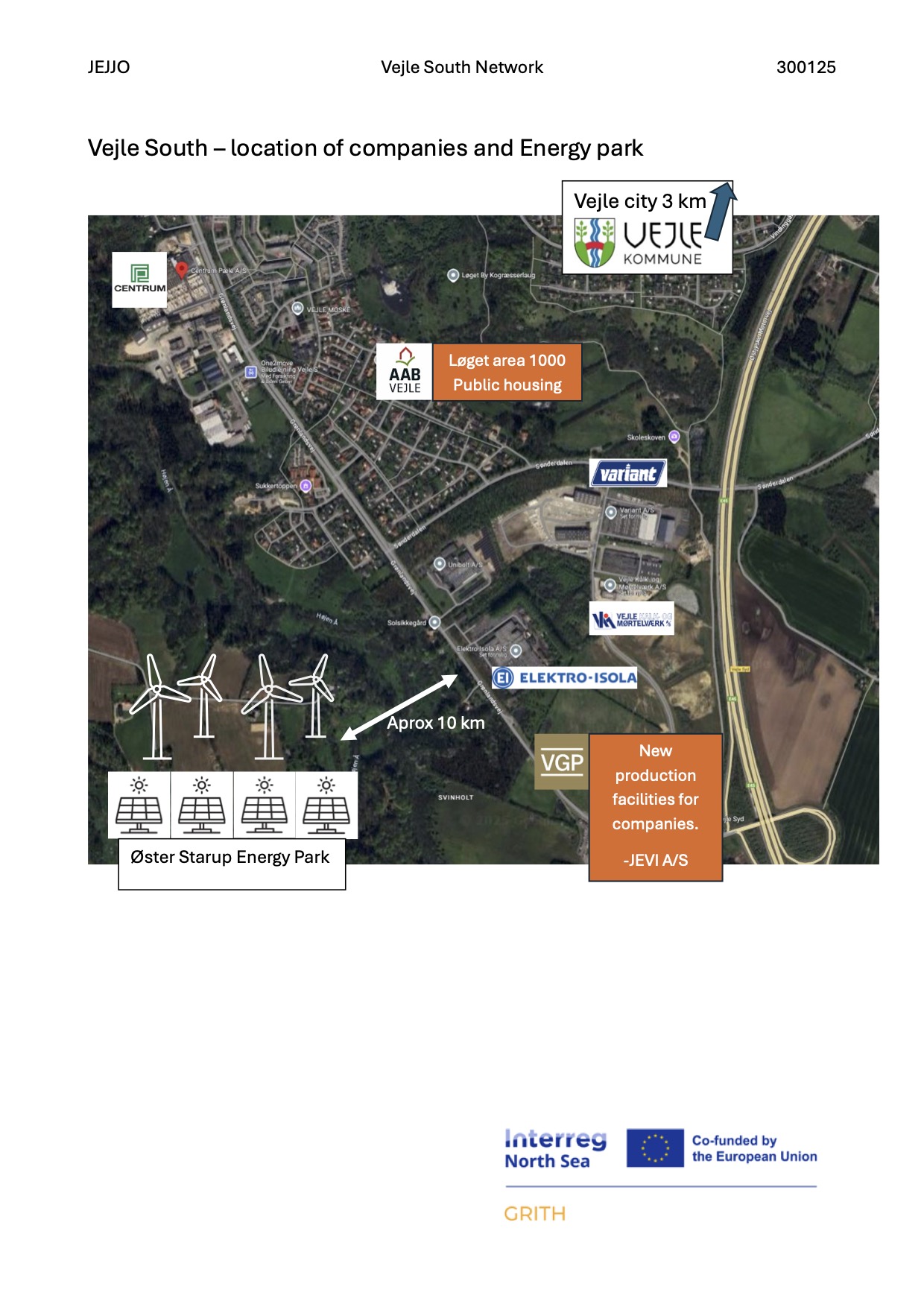 potential Power Purchase Agreements (PPAs) with Øster Starup Energy Park. Here the customer journey model helped planning network formalization, approval for rollout of district heating, and final feasibility studies. The renewable energy systems should be operational in 2026-2027.
potential Power Purchase Agreements (PPAs) with Øster Starup Energy Park. Here the customer journey model helped planning network formalization, approval for rollout of district heating, and final feasibility studies. The renewable energy systems should be operational in 2026-2027.
With industrial site Give Vejle develops a symbiotic renewable energy network (wind, solar, biogas, Power-to-X, district heating), impacting 500+ companies, 3,500 homes, and 6,000 residents to benefit. Here the customer journey helped expanding the network of farmers, SMEs, and residents in Give and Thyregod. The customer journey helped planning the energy park in planning. The next design phases will be completed 2025-2026, with operations expected to start in 2030.
Outside influences on the customer journey
Vejles experience shows that the customer journey is an effective model to organize your work with industrial sites, and that it supports a smoother, shared journey. However, outside influences beyond the control of the municipality and industrial sites, also influence the speed in which the journey continues. National regulations can provide legislative barriers. Especially electricity regulations give many obstacles, slowing progress. Also, district heating regulations hinder surplus heat integration. Energy taxation discourages industrial participation, both electricity and district heating. Infrastructure delays, such as slow progress on national hydrogen and offshore wind projects affect industrial sites. Economic constraints, such as high connection fees for electricity and district heating, deter investment. Finally, resource bottlenecks are coming up: Limited labor, materials, and funding affect project timelines.
Mechelen: CRM-system at the economics department
Enterprises and industrial sites don’t want to be bothered with the many different functions and roles within a local or regional authority. A single point of contact helps to prevent frustration and improves trust plus understanding between authorities and enterprises. Mechelen has implemented such a single point of contact for companies, at its economics department. To further improve its effect these single points of contact are supported by a Customer Relationship Management (CRM) system, which helps with information flow and follow-up on contacts and questions.
After every contact with entrepreneurs the CRM will be filled with data. Additionally, Mechelen plans to implement a system for managing energy-related data, enabling the city to better monitor and follow up on the energy transition of its industrial sites and businesses.
Wesermarsch’ business model for a next generation industrial site
Wesermarsch’ developed and tested a next generation business model for a sustainable, collaborative industrial park Wesermarsch: 138 ha in the vicinity of the roads B212/B437. For this, Wesermarsch made explicit the sustainability criteria and tested their attractiveness for businesses. Inspired by GRITH discussions Wesermarsch chose to work with a broader definition of sustainability, including ecological, economic and social justice aspects (UNESCO – SDG). Following these criteria, will result in higher investment costs for the participating municipalities but also in higher value and prices.
Emmen: Legal Framework for site based renewable energy system
Emmen investigated the legal possibilities for renewable energy exchange between GETEC.PARK Emmen and the company Berton Beton. This legal analysis considered the upcoming Energy Act and European laws and regulations around energy communities. The analysis focused at the consequences for the network connection of both companies and the effect on the network in general.
When it comes to the connection and transport costs, a closed distribution system or a direct line can justify an exemption, meaning that parties are in principle free to determine the costs of connection and transport themselves. This does provide some freedom. However, this freedom has its limits. If a manager of a closed distribution system or a direct line were to charge unreasonable rates, it is conceivable that, after a connected party has complained about this, the Dutch competition authority will intervene.
Mechelen energy brokers
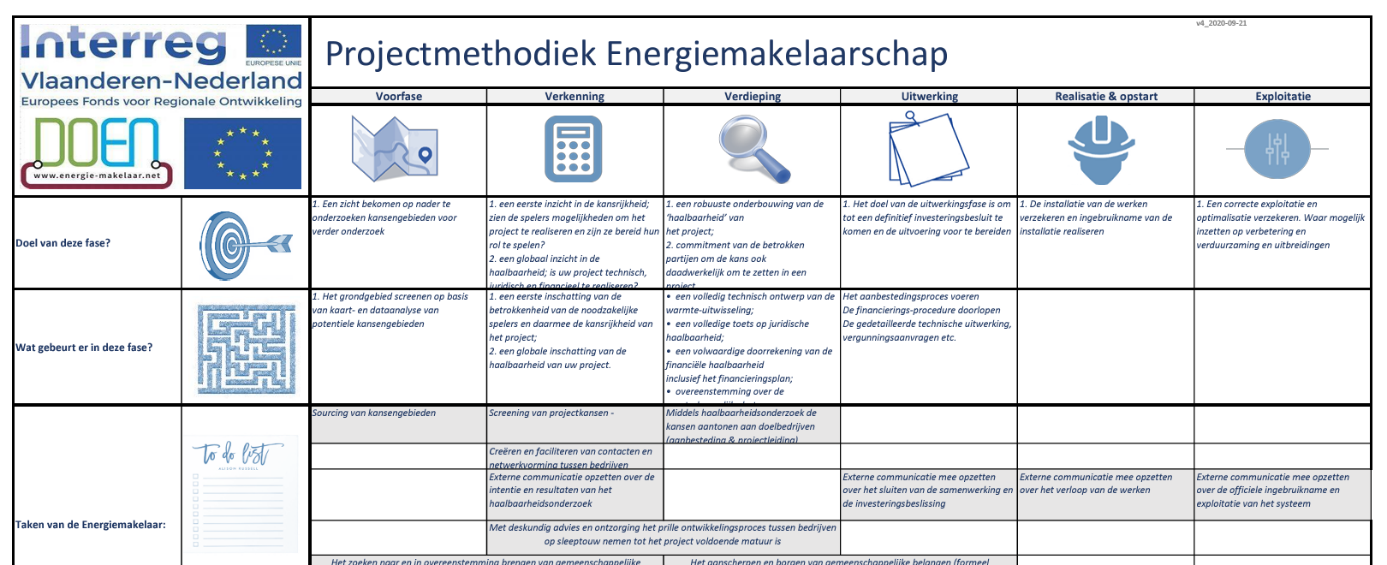 Energy brokers connect municipalities with the companies and vice versa. Especially waste heat / district heating project can profit from the work of energy brokers. Energy brokers from the whole of Flanders exchange practices and knowledge. They organize courses for municipalities to give them an insight in the possibilities in their own area. The brokers help them to create plans and guide them to the next step. Energy landscapes are collectives of municipalities which have the same challenges. Read more about the energy brokers of the Province of Antwerp. In the Antwerp region the Terbekehof is the first – and so far only - functioning energy community on a business park.
Energy brokers connect municipalities with the companies and vice versa. Especially waste heat / district heating project can profit from the work of energy brokers. Energy brokers from the whole of Flanders exchange practices and knowledge. They organize courses for municipalities to give them an insight in the possibilities in their own area. The brokers help them to create plans and guide them to the next step. Energy landscapes are collectives of municipalities which have the same challenges. Read more about the energy brokers of the Province of Antwerp. In the Antwerp region the Terbekehof is the first – and so far only - functioning energy community on a business park.
Energy hub is a place where renewable energy is shared, generated, consumed and stored. The community of energy brokers of Flanders have a website. Dutch energy brokers can join the community. Here you can find the toolbox/guideline in pdf (in Dutch).
Raising awareness, creating engagement: first steps in the Customer Journey
GRITH developed effective instruments to raise awareness in the Energy SWOT Knowledge Pool. The outcome of SWOT analyses, the shared lobby, strategy and technology toolboxes help to create awareness. In this GRITH engagement and support strategy we build on these elements with communication tools, such as Mechelen and Vejles information sessions, Drenthe’s Community of Practice and Emmen’s Industry Table. Also, regional adoption of national initiatives or the joint participation in national programmes raises awareness and engagement, like in the Pôlenergie example of a low-carbon industrial zone (ZIBAC). Finally, building on awareness, GRITH supports industrial sites and enterprises with visualization of their potential, for example by Pôlénergie, with enabling enterprises to collect their own data in Drenthe.
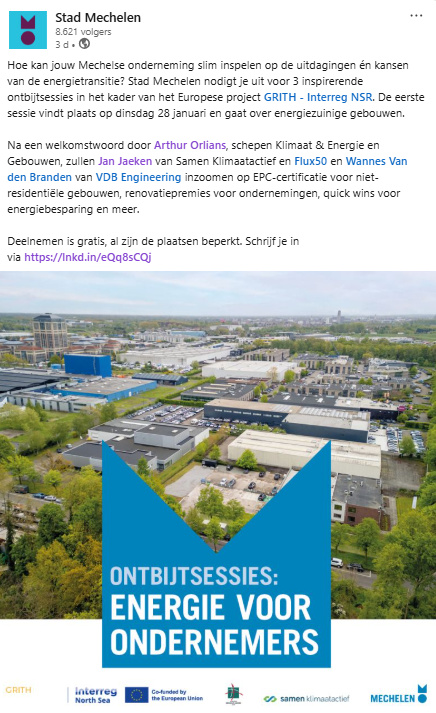
Mechelen Breakfast sessions on energy for entrepreneurs
To disseminate the knowledge gained in GRITH to local entrepreneurs, the City of Mechelen is organizing three information sessions at the Mechelen North business park. Together with local stakeholders, we provide a deep dive in topics like energy communities, CSRD, heat grids, new legislation, ETS2,… These sessions are organized in collaboration with Quares (park management Mechelen North) and the Mechelen North business community organization.
Topics of the sessions are:
- Energy efficiency in commercial buildings and industry
- Sustainability reporting and CSRD
- ‘smart with electricity’ – with a strong focus on energy-sharing and the establishment of a local energy community
Vejle Information Sessions
Wars, climate change, and scarcity of raw materials have spurred initiatives aimed at reducing CO2 emissions, enhancing energy security, and increasing price stability, among other objectives, driven by EU policies and Danish legislation. Businesses (and citizens) are experiencing immense pressure, which is also reflected in the diverse range of stakeholders involved in the Grith project Vejle illustrated in the figure below.
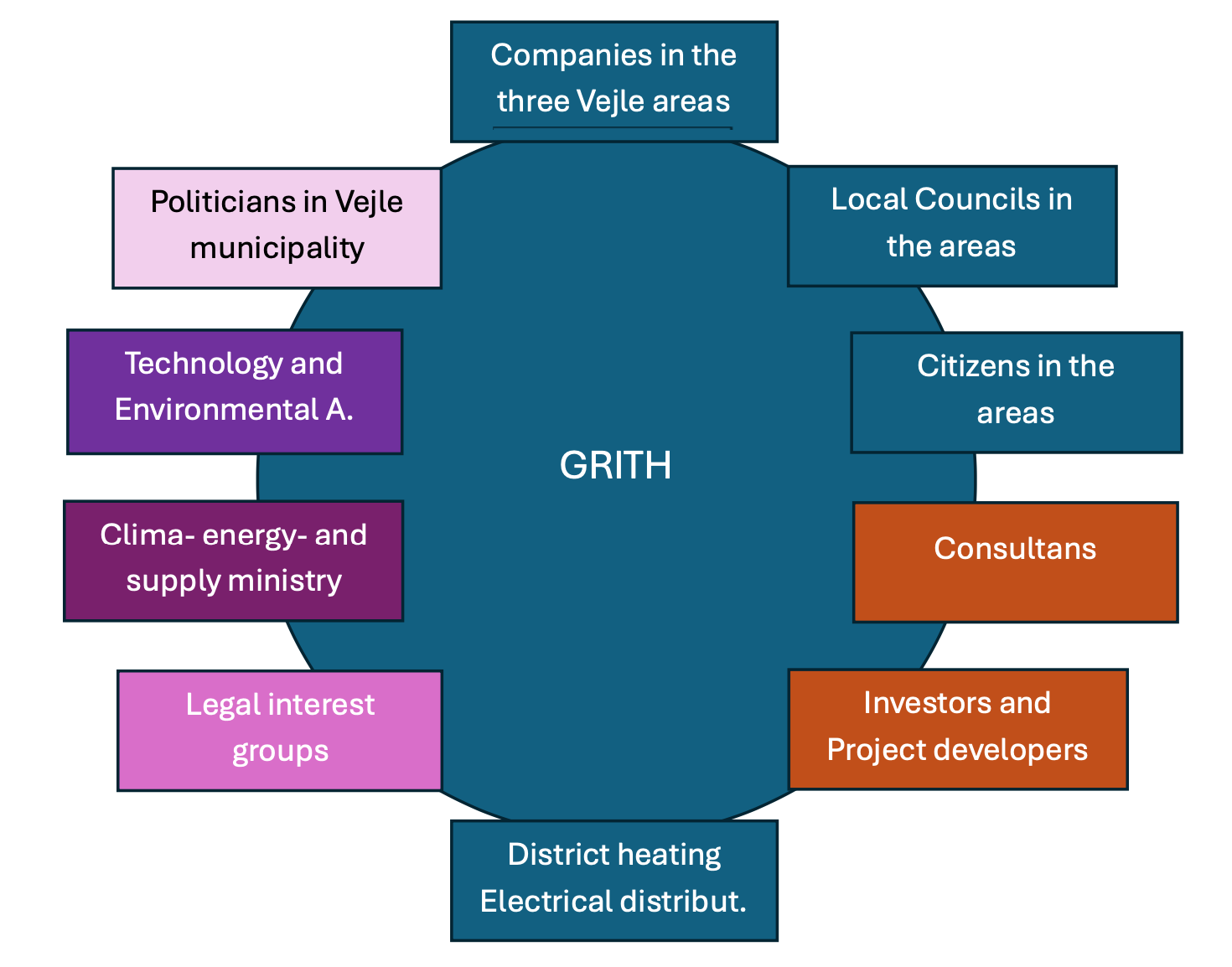
- Businesses, project developers, and utility companies within the energy network is facilitated through informational meetings, networking events, and workshops that are strategically planned and executed.
- Engagement with citizens is conducted via informational meetings and through collaboration with local interest groups.
- Coordination with the Technical and Environmental Administration is maintained through regular meetings to ensure alignment and progress.
- Interaction with local politicians primarily occurs through the municipality's committee structures or via direct communications.
In relation to legislative input, a dedicated working group has been established. This group, comprising representatives from multiple energy networks across the country, develops concrete proposals for legislative changes, which are submitted to the Minister for further refinement and consideration.
Drenthe Community of Practice
Drenthe has created a shared environment, a community of practice. This community wants to scale and accelerate the realization of energy hubs to try and solve congestion problems. This project is currently doing well: it is accelerating & scaling energy hub development to as a solution for grid congestion on industrial parks, by sharing hands on knowledge and experience (technical, organizational, legal), by participants for participants, both for starting organizations as well as matured projects (knowledge bank)
Industry table Emmen and environs
The municipality has an important role in connecting companies and sectors, especially those with great economic importance. Emmen has taken that role by bringing together a core group of energy-intensive companies in the new Industry Table Emmen (and environs). February 2023, the Industry Table was formally established, with a joint development and investment agenda. This agenda links up with the already existing Industry Table North Netherlands (INN). The INN has committed to virtually CO2-free production by 2050 and aims to be among the most sustainable industrial regions in Europe as early as 2030. To this end, the INN lists seven 7 solution directions:
- Maximising energy efficiency
- Electrification, hydrogen and changing energy sources
- Process innovation
- Green raw materialsCircularity
- CCU and CCS
- System solutions
Together with Samenwerkende Bedrijven Drenthe (SBD) and Province of Drenthe, the municipality supports the industry table with official capacity and unlocks subsidies such as, for example, the Just Transition Fund (JTF).
Dunkrik: Low-Carbon Industrial Zone (ZIBaC) Initiative:
Dunkirk has been designated as a Low-Carbon Industrial Zone (ZIBaC) by the French government, aiming for a 30% reduction in CO₂ emissions by 2030 and achieving carbon neutrality in the port area by 2050. This initiative emphasizes:
- Circularity: promoting the reuse and recycling of materials to minimize waste.
- Energy transition: encouraging the adoption of electrification, hydrogen utilization, and energy efficiency measures.
- Carbon management: implementing carbon capture, utilization, and storage (CCUS) technologies.
These efforts are supported by infrastructure developments in electricity, water, hydrogen, CO₂, waste heat, and gas.
Though ZIBaC, Dunkirk's decarbonization strategy is a collaborative effort involving key stakeholders, including politicians, researchers, and economic actors. Notable participants include Air Liquide, Aluminium Dunkerque, ArcelorMittal, ENGIE, and the Grand Port Maritime de Dunkerque. Pôlénergie achieved for the Dunkrik region:
- Strong political support (from local to State level)
- Gathering the whole ecosystem (energy consumers, solution provider, territories)
- Financing the study part of the project
Drenthe: GRITH awareness project P1 meters
Drenthe works on making 400 companies on industrial parks aware of the possibilities to save energy, to save money and be more sustainable at the same time. With a P1 meter linked to your smart meter, you have an up-to-date insight into your energy consumption. A P1 meter is able to read the measured energy consumption and display it in an app on your smartphone, tablet or computer. Here Drenthe works with IBDO/ PVB sustainability advisors. With every visit the advisors will hand out a type of smart meter that allows you to keep track of your companies’ energy consumption in real time and explain how they work. Gives insight into gas and electricity consumption, so you can make more informed decisions about how to be more energy efficient and reduce your overall energy costs. P1-meters will have a GRITH Interreg logo. All company visits and their progress will be monitored and reported.
Visualization of their potential, for example by Pôlénergie
Dunkirk is a very industrial region, responsible for a large percentage of all CO2 emissions in France. Dunkirk sees this also as a responsibility and – supported by Pôlénerige – the city and region work on decarbonization and shifting the focus away from heavy industry and towards innovation which will ideally be reflected in the development of the rest of the port. This shift requires the diversification of the energy supply, which creates the need for relevant infrastructure. For this purpose, a sustainable long-term strategy and broad support is needed. Pôlénergie and GRITH have a role in this overall strategy, where GRITH focuses on the smaller industrial sites of the region. The overall potential of Dunkirk is illustrated with the use of a very nice artist’s impression of the Dunkerque port.
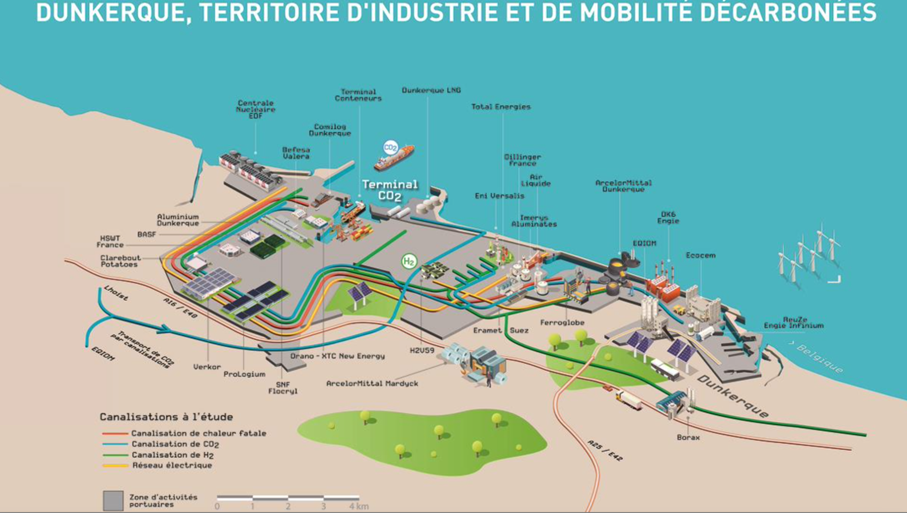
- Take a look at the complete ENERGY SWOT TOOLBOX document.
- You can download the full GRITH Engaging Support Strategy report here.
GRITH Legal Frameworks for site-based renewable energy system
Legal Framework for site-based renewable energy system
Realizing the energy transition on industrial sites calls for site-based cooperation. Working together on such a crucial commodity as energy requires a legal framework that works for all partners involved, addresses their concerns and organizes accountability. GRITH partner Drenthe together with national stakeholders and experts has co-created such a legal framework for on-site cooperation.
Drenthe has developed a framework of agreements that structure cooperation and participation in on-site renewable energy production. This legal framework provides a means of collaboration, organizes the overall structure and underlying contracts, including membership agreements, agreements on capacity, availability and related services.
This Legal Framework was developed together with the participants of Drenthe’s community of practices, with national agency InvestNL and with the legal advice of Kennedy Van der Laan law firm.
2 Layers
The Legal Framework consists of two layers: 1. The energetic framework: the energy flows and services. 2. The contract structure: who contracts what with whom.
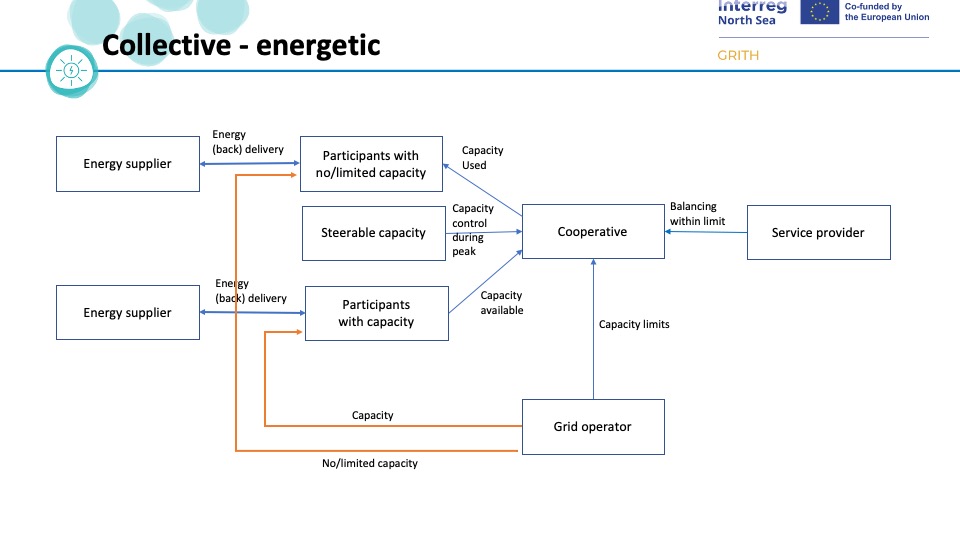
The energetic framework regulates the use of available grid capacity – which is a huge issue hampering the energy transition. Grid capacity is crucial to deliver (back) renewable energy produced on sites, at moments when this energy is not needed on site.
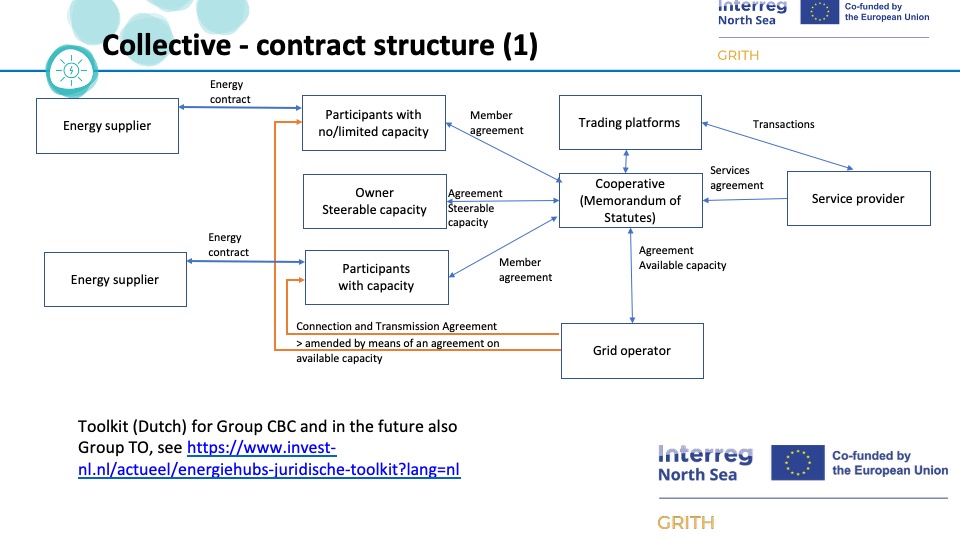
The overall contract structure defines:
- Cooperative: (Memorandum or Statutes)
- Member agreement
- Agreement steerable capacity
- Connection and Transmission Agreement > amended by means of the agreement on available capacity
- Agreement available capacity
- Services agreement
A model agreement or contract makes it easier and more cost-effective to establish an energy hub. The hub signs a Collective Capacity Limiting Contract (C-CBC) with the grid operator. To document the agreements between the hub and other participants, the hub participants also enter into an agreement with each other.
The hub participants can use these model agreements and contracts for the participants and partners within the energy hub:
- a deed of incorporation and articles of association for an energy hub;
- a membership agreement;
- an installation agreement (this contains agreements on the use of 'controllable installations', such as a battery or heat pump in the energy hub);
- a list of topics for drafting a congestion management service agreement (this contains agreements on offering 'energy flexibility' to, for example, grid operators).
The hub can supplement the agreement with information about the specific energy hub and the C-CBC offered by the grid operator. The various contracts must be well-coordinated.
For more information on the GRITH solution: Attached is Drenthe's English presentation of the Legal Framework. The underlying model contracts are available in Dutch and can be downloaded here.
